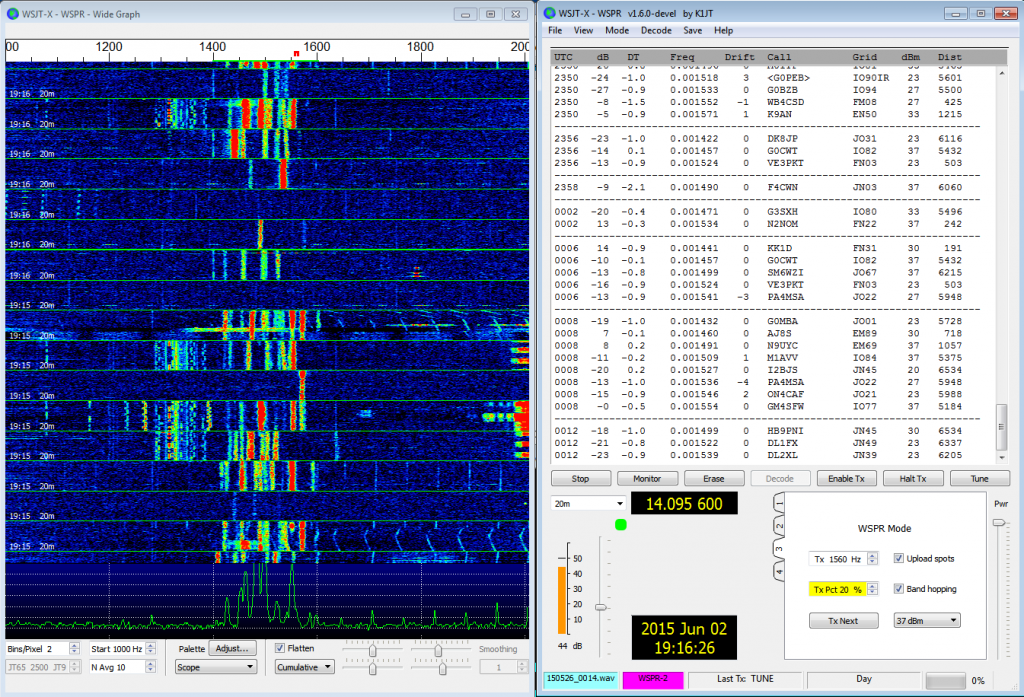Many thanks to SWLing Post contributor, Bill Patalon, who shares a link to the following article on Extreme Tech:
Last Tuesday at 1744 UTC (1:44 PM EDT) UR3RM, a ham radio station in Ukraine blindly sent out a message on 7040.138 kHz. It was automated. It was text. Maybe someone would hear it. Maybe not.
The “maybe not” part is easy to understand because UR3RM’s transmitter was putting out one milliwatt, .01 watts. To put that in perspective, a Class 2 Bluetooth transmitter, the ones good for around 30 feet, run 2.5 milliwatts.
UR3RM was using a mode called WSPR for Weak Signal Propagation Reporting. Unlike most of ham radio, this is a one-way mode. Not only is there little expectation anyone will be listening, but there’s even less that the signal would make it back. Radio propagation isn’t always a two-way path.
WSPR’s biggest selling point is you can do it on the cheap. It’s easy to set yourself up for not much more than $100 and often a whole lot less. And, though a ham radio license is needed to transmit, anyone can put up a receiver. And the US ham license test is multiple-choice, all published and online.[…]
Post Readers: How many here have received and/or transmitted using WSPR? Please comment!


I transmit using the SOTABeam Wsprlite and have been received all over the world on 200mW. I also regularly run a receiver through a Raspberry Pi on various bands so that other amateurs can check their propagation into VK8. I have also recently built a QRP Guys WsprryPi board for one of my Raspberry Pi’s which enables me to transmit 100mW on 20m. I enjoy playing around with WSPR a great deal.
I use it very often to check for propagation and antenna designs, it’s a fun tool to explore extreme-QRP, results like those descibed in the article are not that rare.
Any SWL can set up their computer to receive WSPR beacons and report to WSPRnet, you don’t need to be a licensed ham.
I use the SotaBeam WSPRLite beacon transmitter. Last year, with the WSPRLite set to 100mW on 20M, I was regularly received in New Zealand. I’m in Ontario, Canada.
WSPR is a great way to test an antenna. Including simple RX antennas. It also can “prove” that sometimes propagation exists, even when it shouldn’t 🙂
I use it occasionally , but not too often.
M0KNC